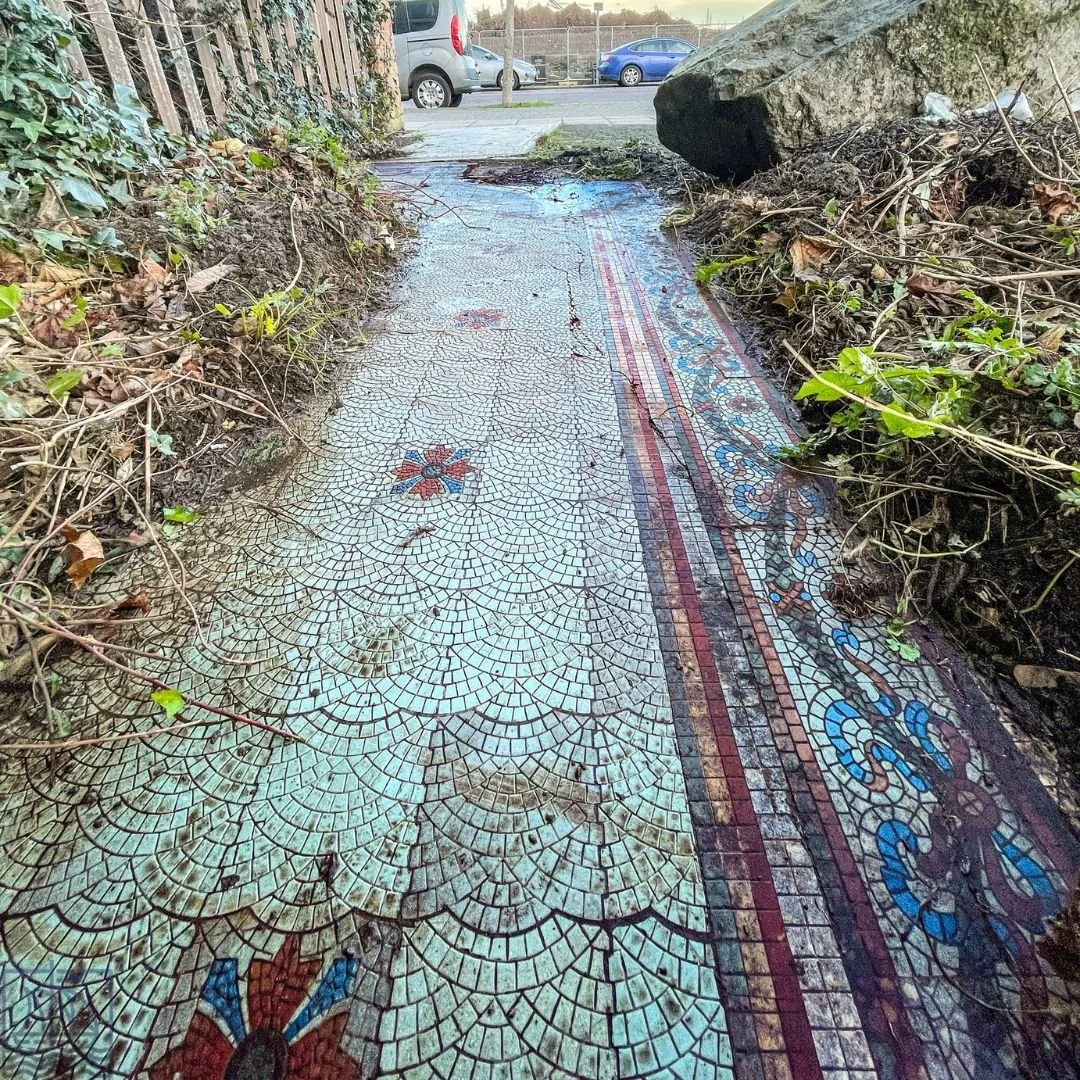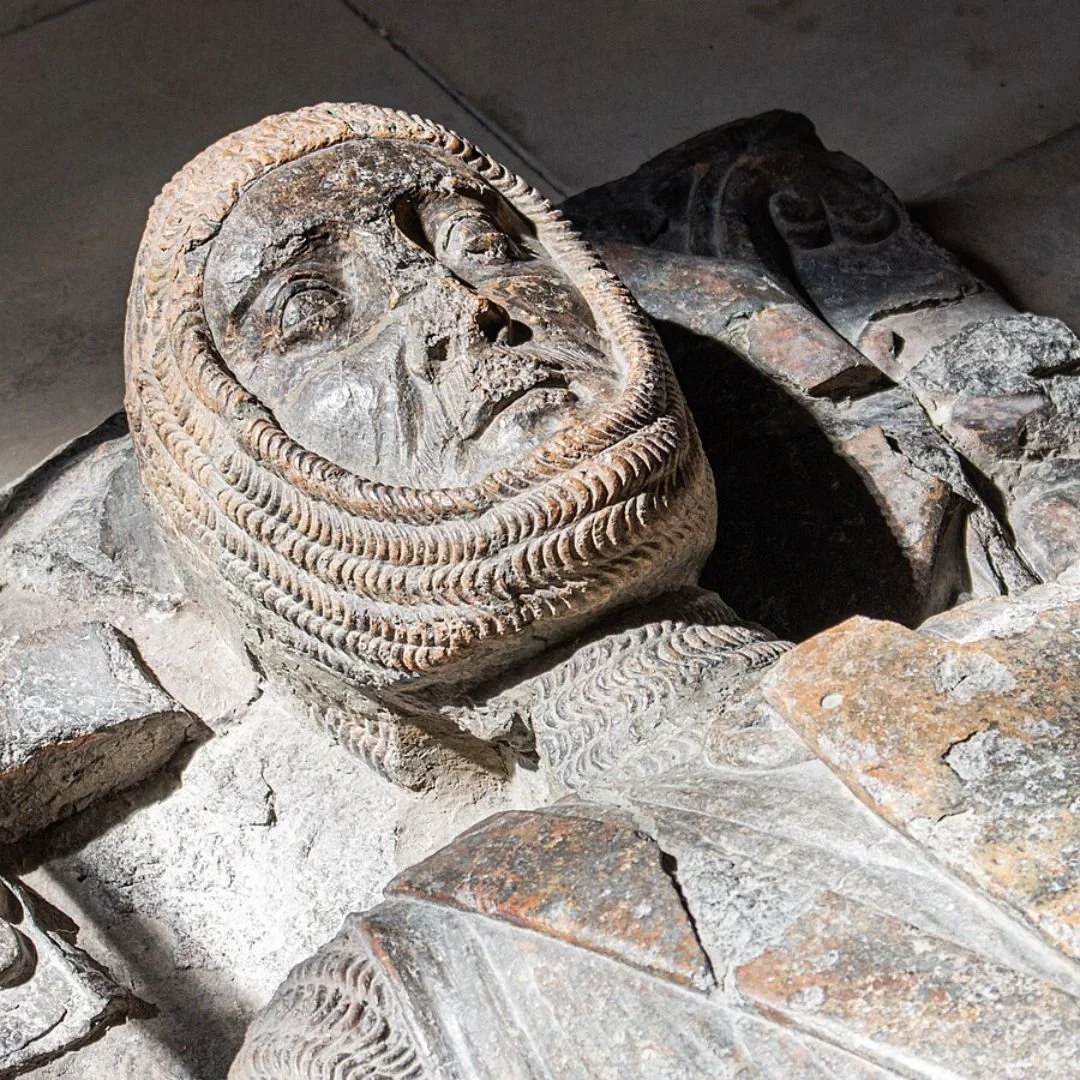1,800 Year Old Roman Statue Found At Burghley House
A construction worker discovered this 1,800-year old Roman statue while digging up a parking lot in the 16th-century Burghley House estate.
It is unclear as to how long the artefact has been buried in the car park, but experts say the sculpture originates from the First or Second century.
The find has been reported to the British Museum, which maintains a database of such discoveries.
Now taking pride of place on display within the Hell Staircase at Burghley House, the marble head of a Roman lady was discovered by a digger driver in spring 2023, closely followed two weeks later by a marble bust.
After being cleaned, experts dated the sculpture from the First or Second Century, with an iron dowel added later, allowing it to be attached to a bust or pedestal.
This type of adaptation was often carried out by Italian dealers in antiquities during the late 18th century to make excavated ancient fragments more attractive to aristocrats travelling in Italy on what was known as the Grand Tour.
It is believed that it was during one of the ninth Earl's two tours to Italy in the 1760s, when he purchased many antiquities, that he brought the sculpture back to Burghley.
But it remains a complete mystery how the head and bust ended up buried in the park, with explanations ranging from a bungled burglary to someone simply discarding the statue and it later being covered by soil.
It is also unclear how long it has remained hidden underground before being discovered in late April 2023 when the new car park was nearly complete.
It was during work on an overflow parking area, at the edge of the main site, that digger driver Greg Crawley noticed a pale object amongst the lifted earth, which turned out to be the head.
Thrilled with the discovery of the ancient artefact, to everyone's amazement just weeks later a second discovery was made within a short distance of where the head was found, when the bust was also unearthed.
Both items were immediately taken to Burghley's Curator before being sent to a professional conservator who was able to carefully clean and consolidate the figure, revealing the features of a beautiful Roman lady, before reassembling both pieces as they had been intended.
The find was also reported to the British Museum, which maintains a database of such discoveries.
And when the House opens again for the 2024 season, on 16 March, the remarkable find will be on display, together with an explanation about its discovery, and alongside other sculptures that were purchased by the ninth Earl.
Greg Crawley, the discoverer of the marble head, said: "I couldn’t believe it when they told me it was a Roman marble statue.
”It was an amazing feeling to have found something so old and special – definitely my best ever discovery.
"I've got a little boy, having it displayed in the house will be amazing. So I can bring him here and he can see what his dad found."
The Romans built statues in England for various reasons, primarily as a means of asserting power, promoting their culture, and honouring important figures.
Statues were often placed in public spaces, such as forums, temples, and city squares, to beautify urban environments and create a sense of grandeur.
They contributed to the aesthetic appeal of Roman cities and served as focal points for civic life.
Creating Roman sculptures required a high level of skill, craftsmanship, and technical knowledge, making the process challenging but rewarding for ancient sculptors.
Sculptors used various tools, such as chisels, hammers, files, and polishing stones, to sculpt and refine their creations.
Working with these tools required skill and dexterity to achieve the desired results without damaging the material or compromising the sculpture's integrity.
Burghley House
Burghley House stands as an impressive 16th century English country estate located near Stamford, Lincolnshire.
Renowned as a prime specimen of the Elizabethan prodigy house architectural style, it was constructed by the Cecil family and remains their residence to this day.
Notably, it holds the prestigious Grade I listing for its historical and architectural significance.
While the exterior of Burghley House maintains its Elizabethan charm, the majority of its interiors have been remodelled prior to 1800.
Open to the public seasonally, the estate showcases a series of opulent state apartments adorned with lavish furnishings.
Designed by Capability Brown, its park adds to the grandeur of the setting.
Situated on the border of Barnack and St Martin's Without civil parishes within the Peterborough unitary authority of Cambridgeshire, Burghley House was historically part of the Soke of Peterborough, traditionally linked with Northamptonshire.
Located 0.9 miles south of Stamford and 10 miles northwest of Peterborough city centre, it is now managed by the Burghley House Preservation Trust under the oversight of the Cecil family.
Extensive Art
Although depleted of a number of important pieces by death duties in the 1960s, the Burghley art collections are otherwise mainly intact and are very extensive.
The house still displays several hundred paintings, a large proportion of which are of the 17th century, bought in Italy by John Cecil, 5th Earl of Exeter (c. 1648–1700), and by Brownlow Cecil, the 9th Earl (1725–1793).
They visited Italy eight times, bringing back large quantities of art.
John Cecil purchased 300 works of art during his 22 years in Burghley and spent on his last visit to Europe £5,000 (c. £600,000 in 2024).
The chapel has a large altarpiece by Paolo Veronese and his workshop, and two large paintings by Johann Carl Loth, a German painter active in Venice with few works in British collections.
There are in total seven works by Luca Giordano, including a self-portrait.
In the Pagoda Room, there are portraits of the Cecil family, Elizabeth I, Henry VIII, and Oliver Cromwell. Many delicately painted walls and ceilings of the house were done by Antonio Verrio.
The Billiard Room displays six oval portraits of members of the Order of Little Bedlam, the 5th Earl's drinking club.
Someone who recently visited the estate said: “The house itself is extremely beautiful and almost more of an art gallery than a house. It's very large, I'd plan about an hour-90min to see it but could easily anticipate it taking longer.
”Particularly interesting are the heaven room/hell staircase, the globe of the moon (extremely rare object!) and the treasury exhibition showing off some of the house's collection.
”There are extensive gardens - the Garden of Surprises, the Sculpture Garden and the South Garden - which took me around 90min-2hours to see.”
If you enjoyed this blog post, please follow Exploring GB on Facebook for daily travel content and inspiration.
Don’t forget to check out our latest blog posts below!
Thank you for visiting Exploring GB.





















